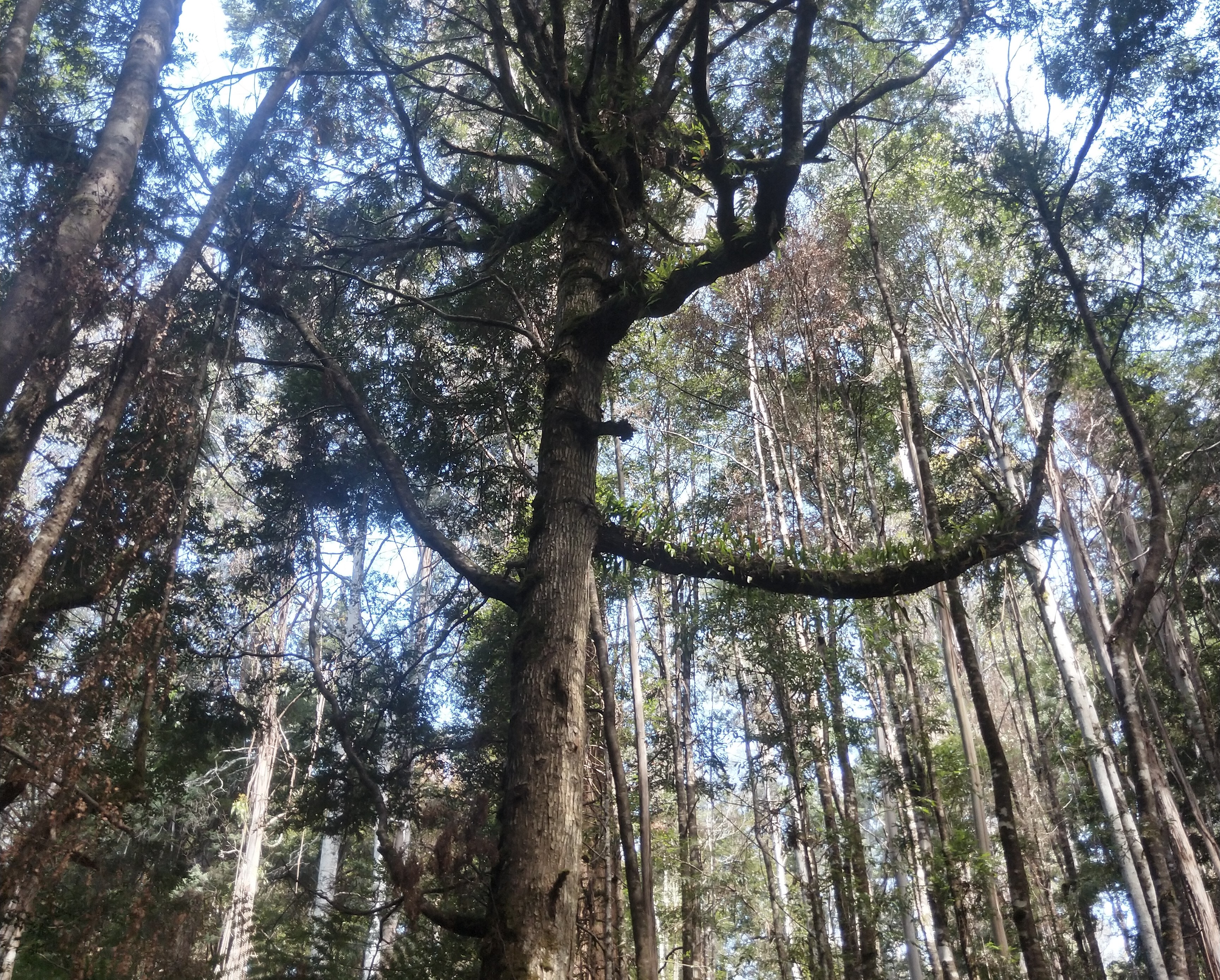Notogrammitis billardierei on:
[Wikipedia]
[Google]
[Amazon]
''Notogrammitis billardierei'', also known as the common finger-fern, or common strap fern, is a small

"''Notogrammitis billardierei''"
Yarra ranges council. Retrieved 12 February 2023. 2. Barbara S. Parris. 1998. "Grammitidaceae" pages 450-468. In: Anthony E. Orchard (executive editor) and Patrick M. McCarthy (volume editor). Flora of Australia volume 48, Ferns, Gymnosperms, and Allied Groups. ABRS/CSIRO: Melbourne, Australia. 3. Wiltshire, R and Dalton, P, FernFlip: Life size guide to the common ferns of Tasmania, University of Tasmania, pp. 32 (2021) "''Notogrammitis billardierei''"
P. G. Wilson. Retrieved 15 February 2023. 5
"''Notogrammitis billardierei''"
Atlas of Living Australia. Retrieved 19 February 2023. 6. A. Taylor, K. Burns. 2016
Radial distributions of air plants: a comparison between epiphytes and mistletoes.
''Ecology'' 97(4), 819-825. {{Taxonbar">from=Q17196214 Polypodiaceae Flora of New South Wales Flora of Tasmania Flora of Victoria (Australia) Flora of New Zealand Flora of the Auckland Islands Taxa named by Carl Ludwig Willdenow
epiphytic
An epiphyte is an organism that grows on the surface of a plant and derives its moisture and nutrients from the air, rain, water (in marine environments) or from debris accumulating around it. The plants on which epiphytes grow are called phoroph ...
or lithophytic
Lithophytes are plants that grow in or on rocks. They can be classified as either epilithic (or epipetric) or endolithic; epilithic lithophytes grow on the surfaces of rocks, while endolithic lithophytes grow in the crevices of rocks (and are als ...
fern with small, strap like fronds, found commonly in wet forest in South-Eastern Australia and New Zealand.
Description
''Notogrammitis billardierei'' is a small fern that typically grows on trunks, dead logs, and rocks It has leathery, dark green, narrow fronds. The fronds are 7-15 cm long, and 4-7 mm wide, with entire margins and obvious midveins. Thesporangia
A sporangium (; from Late Latin, ) is an enclosure in which spores are formed. It can be composed of a single cell or can be multicellular. Virtually all plants, fungi, and many other lineages form sporangia at some point in their life cy ...
are grouped into oblong sori rather than the more common circular sori, and these oblong sori are angled obliquely on either side of the midvein on the underside of each frond The fronds are unbranching but are crowded together, each originating from the rhizome
''Notogrammitis billardierei'' is of the division polypodiophyta, and thus does not produce flower
A flower, sometimes known as a bloom or blossom, is the reproductive structure found in flowering plants (plants of the division Angiospermae). The biological function of a flower is to facilitate reproduction, usually by providing a mechani ...
s, cones, or seed
A seed is an embryonic plant enclosed in a protective outer covering, along with a food reserve. The formation of the seed is a part of the process of reproduction in seed plants, the spermatophytes, including the gymnosperm and angiospe ...
s, instead reproducing sexually through spores.
Taxonomy and naming
The genus, ''Notogrammitis'', comes from the Greek word ''Noto'' meaning 'southern' and ''gramma'' meaning 'line'. ''Notogrammitis'' was previously categorised as a part of the genus ''Grammitis
''Grammitis'' (dwarf polypody) is a genus of ferns in the family Polypodiaceae, subfamily Grammitidoideae, according to the Pteridophyte Phylogeny Group classification of 2016 (PPG I). It had formerly been placed in the family Grammitidace ...
''. The species, ''billardierei'', was named in honour of Jacques Houttou de Labillardiere, a 19th century French botanist. It was named by Carl Ludwig Willdenow
Carl Ludwig Willdenow (22 August 1765 – 10 July 1812) was a German botanist, pharmacist, and plant taxonomist. He is considered one of the founders of phytogeography, the study of the geographic distribution of plants. Willdenow was als ...
, a German botanist.
Habitat and distribution
''Notogrammitis billardierei'' is widespread inrainforest
Rainforests are characterized by a closed and continuous tree canopy, moisture-dependent vegetation, the presence of epiphytes and lianas and the absence of wildfire. Rainforest can be classified as tropical rainforest or temperate rainfores ...
and moist open forest in Tasmania, New Zealand, and the Eastern coast of Australia in Victoria, New South Wales, and Queensland
It commonly grows on fallen trees and on tree ferns, but also grows on rocks and living trees. It requires moist, sheltered conditions to grow, making it much more frequent on South-East facing hillsides than North-west facing hillsides

Cultivation
Cultivation of ''Notogrammitis billardierei'' is limited as it is generally unavailable commercially, and its growing conditions are limited by its epiphytic nature For successful cultivation, it must be treated with delicacy and kept moist. The most common way to cultivate ''Notogrammitis billardierei'' is by mounting it epiphytically on a tree fern, such as '' Dicksonia antarctica''.References
1."''Notogrammitis billardierei''"
Yarra ranges council. Retrieved 12 February 2023. 2. Barbara S. Parris. 1998. "Grammitidaceae" pages 450-468. In: Anthony E. Orchard (executive editor) and Patrick M. McCarthy (volume editor). Flora of Australia volume 48, Ferns, Gymnosperms, and Allied Groups. ABRS/CSIRO: Melbourne, Australia. 3. Wiltshire, R and Dalton, P, FernFlip: Life size guide to the common ferns of Tasmania, University of Tasmania, pp. 32 (2021) "''Notogrammitis billardierei''"
P. G. Wilson. Retrieved 15 February 2023. 5
"''Notogrammitis billardierei''"
Atlas of Living Australia. Retrieved 19 February 2023. 6. A. Taylor, K. Burns. 2016
Radial distributions of air plants: a comparison between epiphytes and mistletoes.
''Ecology'' 97(4), 819-825. {{Taxonbar">from=Q17196214 Polypodiaceae Flora of New South Wales Flora of Tasmania Flora of Victoria (Australia) Flora of New Zealand Flora of the Auckland Islands Taxa named by Carl Ludwig Willdenow